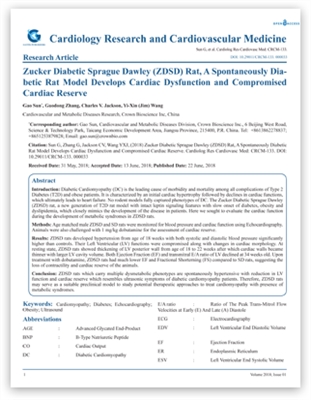Etiopathogenesis of the disease
Different forms of IE are caused by different pathogens and are described in this classification:
- Subacute IE (lasts more than 2 months) - caused mainly by streptococci and staphylococci. The latter are the culprit in 25% of cases, and, as a rule, are much more aggressive in relation to the endocardium. Often it develops due to the entry of bacteria into the bloodstream from infected gums and the gastrointestinal tract. Has an erased current and is poorly recognized.
- Acute IE (lasting less than 2 months) - usually a consequence of infection with Staphylococcus aureus, pneumococci, and gonococcus (the causative agent of gonorrhea). As a rule, it affects, as a rule, previously healthy valves, forming fibroplastic growths on them.
- IE of prosthetic valves - pathogenesis and etiology are associated with unintentional ingestion of resistant strains of microbes during surgery. Fungi such as candida and aspergillus, as well as staphylococcus epidermidis, diphtheria and haemophilus influenzae can negate the efforts of surgeons.
- IE of the right heart - damages the tricuspid valve and pulmonary artery valves when using intravenous drugs, as well as during central venous catheterization for the purpose of intensive infusion therapy. As a rule, the culprits are opportunistic organisms that normally live on the skin, as well as fungi - candidiasis, staphylococcal IE. Diagnosing endocarditis in these patients can be challenging - two-thirds have no history of cardiovascular disease.
So, microorganisms can enter the bloodstream in the following ways:
- From the mouth - Daily activities such as brushing your teeth or flossing, which can compromise the integrity of the gums, causing bleeding.
- Skin infections and sexually transmitted diseases.
- From the digestive tract - during toxic infections and irritable bowel syndrome, when the cellular and immune barrier that protects against microbial invasion is disturbed.
- On catheters - complications often arise when the catheter is installed for a long time.
- Through needles used for piercing and tattooing (at the moment, with the development of a culture of body modification and the use of disposable instruments, this route of infection is almost impossible).
- The use of injecting drugs (intravenously)
Risk factors predisposing to the development of IE:
Implanted artificial or biological valves
- Congenital heart disease
- Marfan syndrome
- History of endocarditis
- HIV infection and AIDS
- Injecting drug use
- Independent uncontrolled use of antibiotics without a doctor's prescription, including for the treatment of acute respiratory viral infections
- Long-term hospitalization
Bacterial endocarditis develops in this way:
Microorganisms colonize the endocardium and damage it. The sites of defects are covered with fibrin and blood cells that have caught on to it, thus forming thrombotic masses (vegetation). Due to the appearance of these formations, found during postmortem examination, endocarditis is also called warty. These growths can crumble and enter the vascular bed, causing thrombosis of different localizations, as well as a source of secondary infection. Tumor metastasis has a similar mechanism.
Further development of the infection, not stopped by antibiotic therapy, leads to immune reactions, due to which irreversible degenerative processes occur in the myocardium, retina, intestines, kidneys and liver, causing failure of these organs. In addition to generalized changes, local ones also occur, such as necrosis of the valve apparatus and papillary muscles, the formation of aneurysms and abscesses, as well as pericarditis (inflammation of the pericardial sac).
The lethal outcome occurs as a result of heart failure developed against the background of acquired valvular disease, embolization of the vessels of vital organs by vegetation, dissection and rupture of aneurysm, sepsis and renal failure.
Symptoms and clinical manifestations
The first signs of backendocarditis often show themselves within 7-10 days after the primary event (tooth extraction, admission to the intensive care unit, surgery). The onset is both acute and gradual. Sometimes IE can proceed with minimal activity, almost imperceptibly for the patient.
The main symptoms of pathology:
General signs of an infectious process: fever, intermittent fever with chills, weakness, sweating at night, loss of appetite, pain in joints and muscles, weight loss.
- Pathological changes in the work of the heart: detection of noise or changes in the characteristics of the old, rhythm disturbances, the development of heart failure.
- PE (pulmonary embolism).
- Chronic renal failure.
- Damage to the central nervous system: acute headache, focal neurological symptoms.
- Disseminated infections: meningitis (inflammation of the lining of the brain), osteomyelitis (bacterial damage to the bone tissue), spleen abscess, pyelonephritis.
- Other embolic lesions: the formation of a septic aneurysm, abscess formation, necrosis of the spleen, kidneys, brain.
- Peripheral symptoms: petechiae (tiny hemorrhages) on the mucous membranes of the eyelids and mouth, hematomas in the form of deep red stripes at the base of the nail plates, Jenway spots (not disturbing bruises on the palms and feet), Osler's nodules ( small painful rounded formations on the fingers and toes), Roth spots (hemorrhages in the retina with a white dot in the center, next to the disc (exit point) of the optic nerve.
- Immune-mediated pathology: inflammation of the vascular wall (vasculitis), glomerulonephritis (damage to the filtering apparatus of the kidneys), synovitis (infection of the joint capsule with changes in the characteristics and amount of intra-articular fluid), splenomegaly (enlargement of the spleen).
- Laboratory indicators: anemia, leukocytosis, increased erythrocyte sedimentation rate (ESR), the presence of rheumatoid factor in the blood.
- Echocardiographic examination: the presence of vegetation. These formations, as a rule, are detected 2 weeks after diagnosis and persist for some time after recovery (usually 2-3 months).
Diagnostics and differentiation
At the moment, the medical community uses Duke's diagnostic criteria formulated in 1994, and this algorithm has not lost its relevance to this day.
Big criteria:
- Detection of bacteria during blood culture followed by cultivation.
- Signs of damage to the valve apparatus on ECHO-KG: visualization of vegetation, abscess, non-closure of a previously intact valve or its artificial element, violation of physiological blood flow (regurgitation).
Small criteria:
- High temperature (more than 38O).
- Antecedent pathology of the cardiovascular system.
- Vascular manifestations: arterial emboli, minor hemorrhages in the mucous membrane of the eye, pulmonary infarction.
- Immunological manifestations: Osler's nodules, detection of rheumatoid factor in the blood, glomerulonephritis.
- Microbiological signs: positive results of blood culture, markers of infection in the patient's body (serology).
A culture study (bacterial culture) is a standard for diagnosing the presence of bacterial circulation in the bloodstream. The material for analysis, as a rule, is the patient's blood, which is taken at several intervals throughout the day in order to ensure the authenticity of the results obtained. For this purpose, the protocol also uses different culture media and incubation parameters, since different microorganisms require different conditions for growth and reproduction.
The exception is patients with implanted valve endocarditis and right-sided IE. In 5-10% of cases, the culture gives a false negative result. The use of antibiotics before blood sampling for research, violation of the test methodology are also causes of data distortion.
A negative result also suggests that endocarditis is caused by non-infectious factors, such as vasculitis, or microorganisms that do not grow on nutrient media.
Sometimes, to determine the source of infection, material is taken from intravenous, central and urinary catheters, hemodialysis shunts and lines for the introduction of chemotherapy, endotracheal tubes, but such a study is not required.
Before making a clinical diagnosis of infective endocarditis, the doctor compares the existing symptoms with signs of other diseases - this process is called differential diagnosis.
Symptoms and signs of infective endocarditis have points of contact with the following pathologies:
- Acute lymphoblastic leukemia
- Connective tissue pathology (Marfan syndrome)
- Myocarditis
- Kawasaki disease
- Pneumonia
- Myxoma of the heart
- Lyme disease (tick-borne borreliosis)
- Lupus
- Vasculitis
- Thrombophlebitis
- Polymyalgia
- Rheumatic arthritis
Treatment, observation and rehabilitation of the patient. Features of pathology management in children
The main goals of IE therapy are the destruction of the infectious agent, the prevention and treatment of complications of the disease. The latter includes both cardiac and general consequences of IE. Some of the effects of endocarditis require surgery.
Emergency medical care, which focuses on stabilizing the patient's condition and preparing for subsequent treatment actions, includes:
Correction of heart failure
- Oxygen supply to compensate for hypoxia
- Hemodialysis for patients with renal failure
Antibiotic therapy should be prescribed only after determining the sensitivity of the pathogen to antibiotics. This ensures efficiency, economic feasibility and prevention of the development of resistance. The patient should stay in the hospital until the body temperature stabilizes.
At the moment, there are no special diets for such a disease, but if the course of heart failure is aggravated, it is necessary to reduce salt intake to a minimum. Physical activity is limited only by the patient's condition.
Mild heart failure resulting from the pathology of the valve apparatus is usually stopped by selected drug therapy, however, in certain cases, surgical treatment is required.
Indications for surgical treatment:
- Preservation of vegetation on the valves after a course of antibiotic therapy
- Acute valvular insufficiency
- Perforation or rupture of a natural valve
- Development of blockages of the cardiac conduction system
- Abscessing of various localizations
- Identification of pathogens resistant to existing antibiotics and microorganisms capable of destroying heart structures in a short time
Symptoms and treatment of bacterial endocarditis in children are similar to those for adult patients, however, the doses of antibiotics are selected depending on the weight of the small patient. In the future, after recovery, the child should be subject to medical examination in a children's clinic.
Possible complications
- Myocardial infarction
- Pericarditis
- Arrhythmias
- Acquired heart disease
- Congestive heart failure
- Aortic root abscess
- Arthritis
- Myositis
- Glomerulonephritis
- Acute renal failure
- Ischemic stroke
- Brain abscess
- Spleen infarction
- Intestinal necrosis
Conclusions
Infective endocarditis, despite the advances in modern medicine, was and remains a potentially life-threatening disease. Timely instrumental and diagnostic examination, competent treatment and prevention of relapse are key factors in successful cure and improved prognosis.



